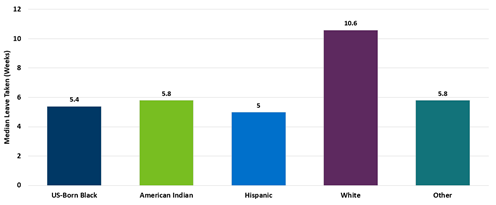News Release
April 14, 2022
New report shows many Minnesota mothers do not have paid leave to care for newborns
Nearly two-thirds of Minnesota mothers take unpaid maternity leave after giving birth, according to a new Minnesota Department of Health (MDH) data brief analyzing maternal trends and behaviors from 2016-2020.
The data shows 34% of mothers took only paid leave, compared to 42% who took only unpaid leave, 21% who took a combination of paid and unpaid leave, and 3% who took no leave.
Evidence shows that access to paid parental leave is linked to fewer infant deaths, increased breastfeeding duration, and improved birth and developmental outcomes. It has also been linked to improved maternal mental health, including a decreased likelihood of depression or psychological distress following childbirth.
“The time following childbirth is a key opportunity to bond with and care for your baby, recover from delivery, and adjust to life with a new child,” Minnesota Commissioner of Health Jan Malcolm said. “Unfortunately, many mothers do not have enough leave to take the time they need and many get no paid time off at all.”
The lack of adequate paid leave can create multiple challenges, like struggling to find or afford child care (many child care providers do not take children younger than 6 weeks), or facing economic hardship by staying home without pay.
The report also highlights disparities in parental leave by race and income.
- More low-income mothers used only unpaid leave compared to mothers with higher incomes (60% vs. 34%).
- 18% of poor and low-income mothers did not plan to return to work compared to 8% of mothers who reported higher incomes.
- White mothers had median length of leave that was nearly two times longer when compared all other racial/ethnic groups.

People of color and American Indians are more likely than white Minnesotans to be in low-paying, less secure jobs with fewer benefits including access to paid parental leave. These inequities can result in poor health outcomes across generations and impact pregnancy and birth complications, as well as other social factors that impact health, like food insecurity or unsafe housing.
Paid leave is an important part of supporting workers and businesses. The Governor and Lieutenant Governor’s supplemental budget recommendation for the current legislative session includes a Paid Family and Medical Leave program to ensure more equitable economic opportunities for Minnesota children and families.
The full report can be found here:
Maternity Leave after Childbirth: Access and Barriers to Paid and Unpaid Maternity Leave, Minnesota Pregnancy Risk Assessment Monitoring System 2016-2020 (PDF)
Data was collected through monthly surveys with new mothers from 2016-2020, through the Minnesota Pregnancy Risk Assessment Monitoring System (MN PRAMS). This ongoing research project between the Minnesota Department of Health and the Centers for Disease Control and Prevention collects data on maternal behaviors and experiences before, during and after childbirth.
-MDH-
Media inquiries:
Erin McHenry
MDH Communications
651-370-3509
erin.mchenry@state.mn.us (preferred)